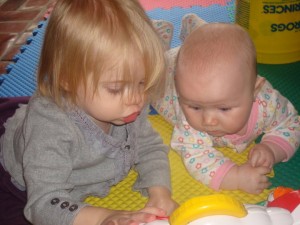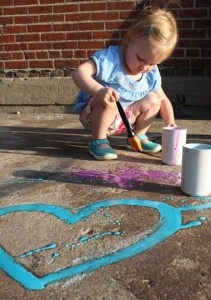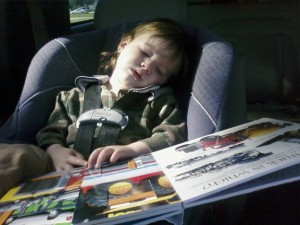- Counting (Cootie)
- Body parts (Cootie)
- Fine motor skills (All games)
- Hand-Eye coordination (Ants in the Pants)
- Balance (Don’t Spill the Beans, Don’t Break the Ice)
- Spacial/Structural Awareness (Don’t Break the Ice)
- Taking turns (All games)
- Imaginary play (ditch the rules and let them play!)
The 4th Shareworthy Game from Casey’s Top 5
#4 The Learning Journey Explore and Learn Counting Treasures!
- Fine motor skills (puzzle)
- Spacial Awareness (puzzle)
- Number recognition (1-10)
- Number awareness: relationship between number symbols and counting objects
- Taking turns
- Early addition
The 3rd Shareworthy Game From Casey’s Top 5
- Fine motor skill development (turning dominoes around in one hand, stacking and balancing)
- Hand-Eye coordination
- Imaginary Play
- Spacial Awareness
- Creative design
- Sharing
- Pre-Math Skills (matching and patterns)
- Hand-Eye coordination (balancing)
- Fine Motor Skills (stacking and building)
- Imaginary Play
- Spacial Awareness
- Creative design
- Sharing
- Counting
- Addition and subtraction (depending on the game)
- Matching
- Number awareness (understanding the relationship between numbers and amount of dots)
- Problem Solving
- Strategy
- Taking turns
- (All the other skills mentioned above)
Guest Post From “The Mommy Calling”
Mommy Teaching for the Non-Teacher Mommy by Krista
“There are some mommies lucky enough to have the experience of teaching, some blessed with the gift of teaching, then there’s some who just throw a bunch of ideas at their kids and hope that just one will stick.
 None are wrong, although some may be easier and work better than others, but when it comes to being a mommy teacher the only rule is to keep kids engaged! When my first son was diagnosed with autism at 18 months we started sending him to therapy from 8-3 five days a week. I don’t know what I was expecting, but I definitely wasn’t expecting this so-called “intensive” therapy to look like playtime. The autistic brain works differently so I had to use some more involved techniques with my son, but the one thing that I took from his therapy that I can apply to all of my children is this, just play. Let them get dirty, let them make messes, let them touch, and feel, and listen, and do! Don’t stifle your children by telling them, “no” and don’t let your fears or discomfort keep your children on the sidelines! But, unlike my teacher, mommy friends I don’t have a portfolio to pull from, I don’t have training or experience. So how can I make sure my children are staying engaged, not getting bored, learning and trying different things each day? There is one thing that changed my non-teacher mommy life: the internet! Here are a few ways to use what others have learned and done to your advantage…
None are wrong, although some may be easier and work better than others, but when it comes to being a mommy teacher the only rule is to keep kids engaged! When my first son was diagnosed with autism at 18 months we started sending him to therapy from 8-3 five days a week. I don’t know what I was expecting, but I definitely wasn’t expecting this so-called “intensive” therapy to look like playtime. The autistic brain works differently so I had to use some more involved techniques with my son, but the one thing that I took from his therapy that I can apply to all of my children is this, just play. Let them get dirty, let them make messes, let them touch, and feel, and listen, and do! Don’t stifle your children by telling them, “no” and don’t let your fears or discomfort keep your children on the sidelines! But, unlike my teacher, mommy friends I don’t have a portfolio to pull from, I don’t have training or experience. So how can I make sure my children are staying engaged, not getting bored, learning and trying different things each day? There is one thing that changed my non-teacher mommy life: the internet! Here are a few ways to use what others have learned and done to your advantage…
Pinterest! Welcome to your own personal portfolio. Get prepared to hear your children say on a pretty regular basis, “You’re the coolest mom ever!” The possibilities are endless. From arts and crafts to bedroom ideas you will always be able to find something that you will love. Making monsters out of tissue boxes,
 how to make your own sidewalk paint, even artwork your children can help you make for their playroom, you will never run out of things to do! It’s super easy if you don’t have an account to create one. Just go to pinterest and request an invite (or ask a friend who you know has an account to send you an invite through e-mail). Create your boards and start pinning photos from their site, your friends’ boards, or anything else you come across while searching the web. Just be careful it is more addictive than Facebook and a lot more fun!
how to make your own sidewalk paint, even artwork your children can help you make for their playroom, you will never run out of things to do! It’s super easy if you don’t have an account to create one. Just go to pinterest and request an invite (or ask a friend who you know has an account to send you an invite through e-mail). Create your boards and start pinning photos from their site, your friends’ boards, or anything else you come across while searching the web. Just be careful it is more addictive than Facebook and a lot more fun!
Facebook groups and blogs. Obviously, you’ve already noticed how helpful it is to have the advice of those who have “done” to help you learn how to “do”! It’s amazing the information you can find (good and bad…so make sure you know the source of whatever info you’re looking at!) from other mommies and professionals. One group I found on FB is the Play At Home Mom which gives great ideas for sensory play from therapists and moms. If you have a specific area you need to work on with your child try searching for a group that caters to that specifically i.e.
 I follow the Sensory Processing Disorder Foundation and the Baton Rouge Speech and Hearing Foundation so I can keep up easily with news of therapy ideas, new research, events, etc. Blogs are fabulous as well (obviously I think so since I’m a blogger!) But you need to make sure you are not getting overwhelmed with the feelings of insecurity you can get while looking at something that seems to show a “perfect” mom doing the “perfect” things. Remember, all of these “perfect” ideas came with trial, error, and a lot of grace. Luckily, you get to see the finished product, but don’t forget that these moms didn’t get it right the first (or fiftieth) time either. Don’t get overwhelmed with everything you “can” and “should” do, just pick a few and go with it. No pressure!
I follow the Sensory Processing Disorder Foundation and the Baton Rouge Speech and Hearing Foundation so I can keep up easily with news of therapy ideas, new research, events, etc. Blogs are fabulous as well (obviously I think so since I’m a blogger!) But you need to make sure you are not getting overwhelmed with the feelings of insecurity you can get while looking at something that seems to show a “perfect” mom doing the “perfect” things. Remember, all of these “perfect” ideas came with trial, error, and a lot of grace. Luckily, you get to see the finished product, but don’t forget that these moms didn’t get it right the first (or fiftieth) time either. Don’t get overwhelmed with everything you “can” and “should” do, just pick a few and go with it. No pressure!
Don’t feel like you can’t be a mommy teacher just because you’re not a teacher mommy! You know your child better than anyone, and with a little effort and a few resources you can make sure that at least a few of the seemingly random things you throw at your child actually stick. Feel free to share your successes, failures, and mommy teacher ideas! After all, the best way for us to learn is to learn from each other.”
Even When School Starts, You are Still a Mommy Teacher
Hey, Mommy Teachers! It’s Casey, stopping by from Kidspired Creations! Well, this week ended an era for me as my oldest son, James’, primary teacher because he started Pre-K on Monday! I have been flooded with crazy emotions: sad that my baby is all grown up, ecstatic that I will only have 1 kid at home during the day, tired because this is the first time we have had to use an alarm in the mornings, excited to hear about all of his new adventures and friends, nervous that he’ll make poor choices without me, proud that he’s made amazing choices so far, giddy when the teacher tells me how smart he is, overwhelmed with the thought that he will now be in school until his mid-twenties at least, blessed when I pick him up and he runs to me saying, “I love you, Mommy!” and PUMPED when he complained, “Mommy, where’s my homework?“
| 4 times each because he’s 4 years old. His rule. |
1st Day
Looking through his art that his teacher sent home from school on the first day, I noticed that she had written his name on top of each paper with a highlighter and someone had traced his name with a pencil. I say someone because it was way too neat to be my son. Maybe the teacher helped guide his hand when tracing, but it was just way too neat. So I decided the first thing on our homework agenda was to practice writing his name.
As you can see, I wrote his name in highlighter, and he traced it. To teach him to always write from top-bottom, left-right, I sometimes had to draw a dot where he was supposed to start, and a dot where he was supposed to stop and pick up his pencil. This is a great way to teach directionality and print awareness. As you can see, he needs a little help working on writing dark enough. Putting pressure on his hands to show him how hard he was supposed to press helped, but writing lightly is a hard habit to break.
Next it was time to do some math! James has been dying to use his new super cool Cars ruler and he finally got his opportunity. He already understands that “inches” is a form of measurement and he constantly “measures” things in inches: “Mom, my foot is 18 inches!” “Mom, my scooter is 20 inches.” “Mom, this blanket is one hundred and ninety hundred and one thousand inches.” So I decided to shake things up a bit and teach him the difference between inches and centimeters.
Oh, and for every answer he got right, he got a piece of candy. It was snack time, after all, and my kids found my secret stash of candy, so we all 3 dove in! (Please don’t judge, my kids rarely eat candy, but as soon as they found my favorite candy, well, I wanted it too). It really made it exciting for him when he got the answer right or traced a letter well.
2nd Day
James has NEVER been enthusiastic about writing, drawing, or coloring. So when he comes home from school EXCITED to do homework, I definitely don’t want to make it too boring for him. So since we practiced his name yesterday, today I had him just work on one letter. Naturally, I chose the letter Aa.
He traced the uppercase “A” four times, lowercase “a” four times, then came up with four words that start with an A. He came up with “alligator, apple, and & ant.”
For Math we learned about squares and rectangles. He was able to tell me the difference between the two but he couldn’t describe WHY they are different.
Me: “Now how many sides does a square have?”
James: “1, 2, 3, 4.”
Me: “And how many does a rectangle have?
James: “It has 4 too!”
Me: “So if they both have 4 sides, how are they different?”
James: “Hmmm that’s a good question, Mom.”
So we took out our favorite school tool, the ruler, again. He measured the sides of the square and the sides of the rectangle and was then able to tell me the length of the sides.
James: “This one is 2 and 2 and 2 and 2 inches and this one is 2 and 2 and 6 and 6 inches!”
Then it clicked… * “Oooooh the rectangle has two sides that are longer!” Now he has the language to describe why one shape differs from another which is a higher-order thinking skill: he isn’t just understanding that there is a difference between the shapes, he is analyzing WHY the two are different. Then he got to draw his own rectangle and his own square from memory.
We also incorporated what we learned about the letter “Aa” by searching, identifying, circling and tracing the letter in each of the words square and rectangle.
So, on DAY 2 we covered letter recognition, phonemic awareness, fine motor skill development (writing), print awareness, directionality, shapes, measurement, and language development.
3rd Day
Well, with school comes germs, so we are home sick. New emotions: frustrated that we didn’t even last a whole week without catching somebodies ickies, and very snuggly, if snuggly was an emotion.
| Still wearing his sticker he got from school yesterday. |
However, as soon as my youngest went down for a nap, James pulled out his school supplies… this time his markers. I drew several over-sized crayons onto paper and wrote different color names on them. James then had to sound out each of the words: “/r/ /e/ /d/… RED!” and then he had to find the red marker to color the red crayon. “/y/ /e/ /l/ /l/ /o/ /w/ Yelulahwuh! YELLOW!” Yup, a little trickier since the sounds changed up at the end. “/o/ /r/ /a/ /n/ /g/ /e/… um… what does THAT say?” Haha that one can trip anyone up! Here’s where we had a mini-lesson: “James, the letters o and r together say /or/. Can you think of a color that starts with /or/?”
Was the goal of this lesson to get James to sound out each word? No. The reason is that most of these words break the standard sound rules that he knows. This was a step in being able to recognize these sight words, words that we know how to read because we have memorized the shape the words make, and not by sounding them out. He was also able to learn to use reading clues to help him guess the word. “What color starts with /g/ and ends in /n/?” By modeling these types of questions for kids, they will learn to do the same thing when reading, or when solving problems in general!
So what’s next on our homework agenda? Well, when more school work comes home I may get a better idea on what they are learning day-to-day, but for now, we will continue to work on the rest of the alphabet (both letter names and sounds) number recognition, making patterns, rhyming, language development, fine motor skill development (writing, using scissors, playing with play dough), measurement, compare/contrast and more!
And we’ll definitely work on drawing…
| “We are in a rocket ship.” Apparently. |



